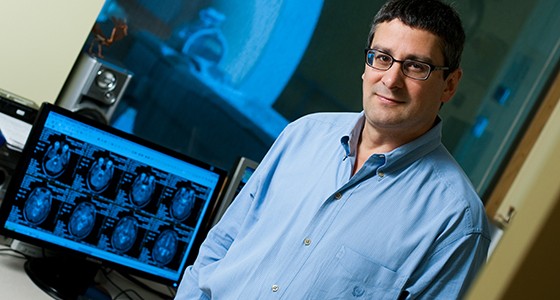VCH Research Update: Study challenges MS treatment and researchers map out the stroke
Study finds narrowing of veins is not unique to people with MS
Multiple Sclerosis (MS) is the leading cause of neurological disability in the world1. Canadians have one of the highest rates of MS and three Canadians are diagnosed with MS every day2. The disease randomly attacks the myelin coating of nerves in the brain, optic nerves and spinal cord causing permanent scaring. MS patients are in need for treatments that can make a difference in their quality of life — this is the driving force in health and medical research.
Initial reports indicated that all patients with MS have chronic cerebrospinal venous insufficiency (CCSVI), the narrowing of the veins leading from the brain to the heart. First put forth by Dr. Paolo Zamboni in Italy in 2009, the study claimed th
at MS is associated with CCSVI, and that some MS patients can be effectively treated by angioplasty to widen the veins. However, all prevalent studies have been limited to the imaging techniques of ultrasound without validation from catheter venography, which has the advantage of direct visualization of venous anatomy.
Dr. Anthony Traboulsee, director of the MS Clinic at UBC Hospital of Vancouver Coastal Heath and associate professor of Division of Neurology at UBC, uses the ‘gold standard’ imaging technique — catheter venography — to investigate the CCSVI theory by directly visualizing the veins of people with MS, their unaffected siblings and unrelated healthy research participants. The results, published in the U.K. medical journal The Lancet, confirm that venous narrowing is not a unique anatomical feature associated with MS.
Dr. Traboulsee’s research team, in collaboration with the University of Saskatchewan, calls into question the basis for a controversial theory that there is an association between venous narrowing and MS. 177 study participants enrolled in the study between January 2011 and March 2012. Traboulsee’s team found venous narrowing in 74% of people with MS, 66% of their unaffected siblings, and 70% of the unrelated research volunteers. “Our results confirm that venous narrowing is a frequent finding in the general population. This is the first study to find high rates of venous narrowing in a healthy control group as well as the first to show that the ultrasound criteria usually used to ‘diagnose’ CCSVI are unreliable,” says Dr. Traboulsee. The research study addresses the need for carefully designed and high quality research technology and methodology to fully investigate new theories of MS.
Click here for the abstract of the article published in The Lancet on October 8, 2013.
REFERENCE:
1Multiple Sclerosis International Federation. What is MS? http://www.msif.org/about-ms/what-is-ms-1.aspx
2Multiple Sclerosis Society of Canada. About MS. http://mssociety.ca/en/information/default.htm
Superhighways lead to future treatment for stroke

Dr. Tim Murphy, researcher at the Brain Research Centre and professor at the Department of Psychiatry at UBC
Stroke patients often experience rapid loss of brain function due to an interruption of blood flow to the brain or the rupture of blood vessels in the brain. If not treated properly, stroke can cause permanent neurological damage, or even death. Researchers have been looking for ways to more precisely target this complex illness1.
According to Dr. Tim Murphy, researcher at the Brain Research Centre and professor at the Department of Psychiatry at UBC, spontaneous brain activity is not random. In fact, it follows a predictable pattern based on the brain’s hard wiring.
“We were able to make maps that could predict signal movement,” says Dr. Murphy. “We could pinpoint which areas of the brain would next be activated by following common ‘superhighways’ or pathways of signal movement during spontaneous brain activity.”
After further investigation, Dr. Murphy and his team found that when one part of the brain was stimulated other adjacent areas also became activated, even in the absence of direct stimulation. Additional adjacent brain areas were further triggered as a result of the stimulation. This is also the case for brains at anesthetized state.
“Understanding information processing pathways and patterns are important because this helps us with potential strategies to manage and treat problems if they occur,” says Dr. Murphy. “For instance, we might be able to predict which adjacent areas of the brain will be affected as a result of an initial stroke.”
This study sheds new light on treatment for stroke. Researchers are hopeful that the brain activity map will aid the development of a more targeted treatment or rehabilitation strategy for people who have had a stroke.
The research was funded by the Canadian Institutes of Health Research, the Human Frontier Science Program, the Michael Smith Foundation for Health Research, and the Heart & Stroke Foundation of Canada.
REFERENCES
1Heart and Stroke Foundation, 2012.What is Stroke?http://www.heartandstroke.com/site/c.ikIQLcMWJtE/b.3483935/k.736A/Stroke__What_is_Stroke.htm

